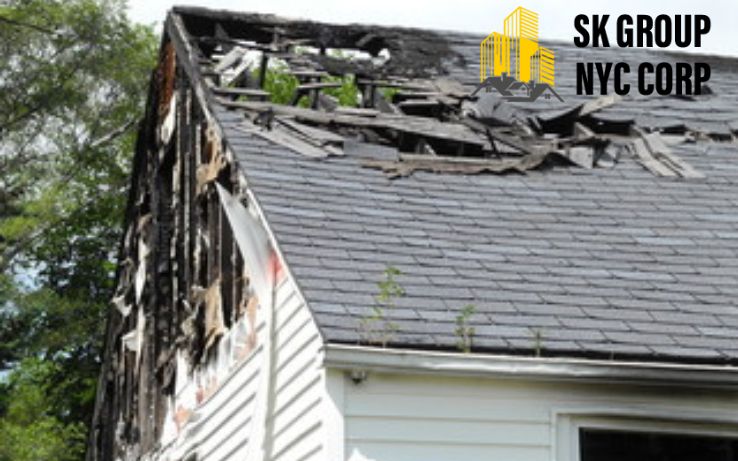Your roof is more than just a cover it’s your home’s first defense against weather, leaks, and structural damage. Over time, roofs face wear and tear from storms, snow, heat, and everyday aging. Ignoring small issues can lead to major problems, including water damage, mold, and expensive replacements.
Roof damage repair isn’t just about aesthetics it’s about protecting your home, family, and investment. Knowing the warning signs can save you thousands and prevent emergencies.
1. Missing or Damaged Shingles
One of the clearest signs of roof trouble is missing, cracked, or curling shingles. Strong winds, heavy rain, or snowstorms can lift shingles, leaving your roof exposed.
- Why it matters: Exposed areas allow water to seep in, causing leaks and structural damage.
- What to do: Call a professional for roof damage repair before leaks worsen.
Tip: Regularly inspect your roof after storms to catch shingle damage early.
2. Water Leaks or Stains Inside Your Home
If you notice water spots on ceilings or walls, it’s often a sign of roof leaks. Even small leaks can grow quickly if not addressed.
- Why it matters: Water damage can weaken your ceiling, walls, and insulation, and can lead to mold growth.
- What to do: Schedule immediate roof damage repair to prevent further structural damage.
Pro Tip: Look for dark spots, peeling paint, or musty odors as indicators of hidden leaks.
3. Sagging Roof Deck
A sagging or uneven roof deck is a serious warning sign that your roof structure is compromised. This can happen due to water damage, rotting wood, or excessive weight from snow.
- Why it matters: A sagging roof risks collapse and is dangerous for anyone nearby.
- What to do: Contact a professional roofing contractor immediately for roof damage repair and structural assessment.
4. Granules in Gutters or Around the House
If you notice shingles’ granules accumulating in gutters or on the ground, it’s a sign of aging or damaged shingles.
- Why it matters: Loss of granules reduces your shingles’ ability to protect against water, sun, and wind damage.
- What to do: Schedule roof damage repair to replace damaged shingles and extend your roof’s life.
Note: Granule loss is common in asphalt shingles, the most popular roofing type in NYC.
5. Higher Energy Bills
A damaged roof can affect your home’s insulation, letting hot or cold air escape. If your energy bills suddenly spike, your roof may be the culprit.
- Why it matters: Poor insulation means your HVAC works harder, costing you more money.
- What to do: Professional roof damage repair can restore your roof’s efficiency and save on energy costs.
Why Acting Fast Matters
Ignoring these signs can turn a small, affordable repair into a full roof replacement. In NYC, extreme weather like heavy snow, rainstorms, and wind can worsen roof damage quickly. Timely roof damage repair protects your home, ensures safety, and saves money.
How SK Group NYC Corp Can Help
At SK Group NYC Corp, we specialize in roof damage repair in NYC. Our experienced team inspects, repairs, and restores roofs with high-quality materials and expert craftsmanship. We handle:
- Storm damage repairs
- Leak detection and fixing
- Shingle replacement
- Flat and pitched roof repair
We make the process easy and reliable, ensuring your home stays safe and comfortable.
FAQs About Roof Damage Repair
Q1: How quickly should I repair a damaged roof?
A: As soon as possible. Delaying repairs can lead to leaks, mold, and structural damage.
Q2: Can I do roof damage repair myself?
A: Minor maintenance is possible, but professional repair ensures safety, quality, and long-term protection.
Q3: How much does roof damage repair cost in NYC?
A: Costs vary depending on damage severity, roof type, and size. Contact a contractor for an accurate estimate.
Q4: Will insurance cover roof damage repair?
A: Often yes, especially for storm damage. Check your policy and contact a professional for documentation.
Conclusion
Your roof is crucial for protecting your home and family. Missing shingles, leaks, sagging decks, granule loss, and higher energy bills are all warning signs that require immediate roof damage repair. Acting quickly can prevent costly replacements and keep your home safe.
For expert roof damage repair in NYC, trust SK Group NYC Corp to deliver fast, reliable, and professional service.
Have Questions? Call Us Now!
+1 (718) 507-7000
We’re here to help quick answers, friendly service, anytime you need!
Contact SK Group NYC
🌐 Website: www.skgroupnyccorp.com
📍 Serving: Manhattan, Brooklyn, Queens, The Bronx, and Staten Island
📍 Address: 87-88 172nd St, Jamaica, New York, NY, United States, New York

